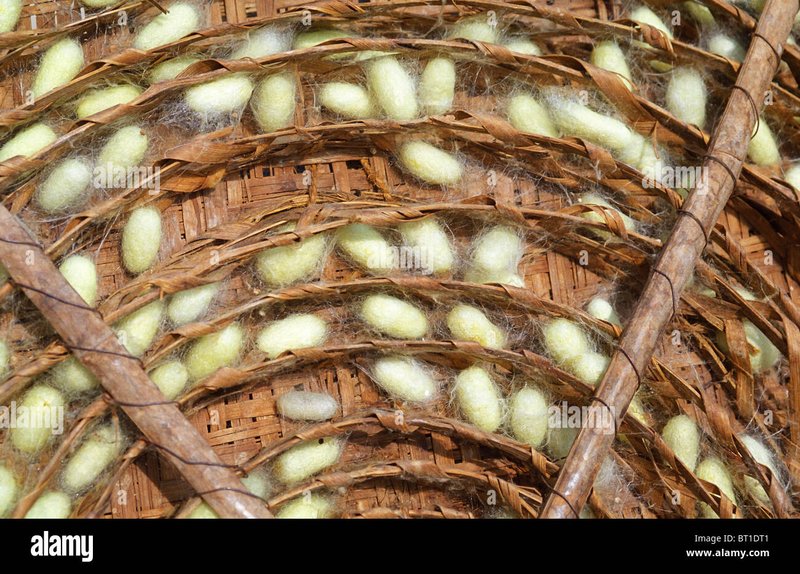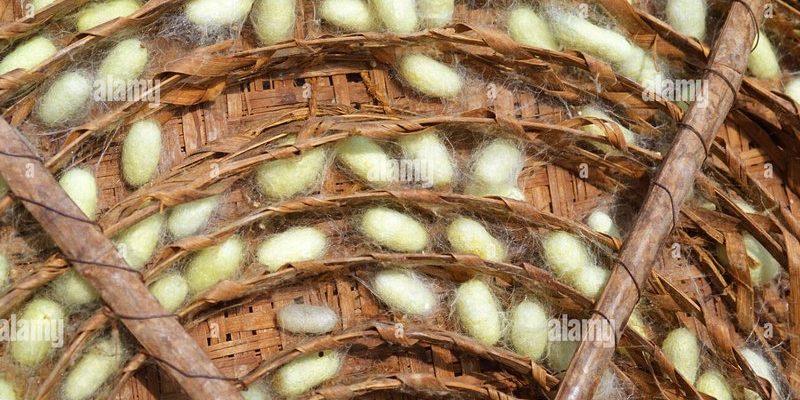
Let’s dive into the world of silkworms and uncover the surprising journey from caterpillar to the beautiful silk we adore. This isn’t just a numbers game; it’s a tale of nature’s ingenuity and the delicate balance of life. So, grab your favorite cup of coffee, and let’s explore this silky topic together!
Understanding the Silkworm Lifecycle
Before we get into the nitty-gritty of how many silkworms are needed to produce a gram of silk, it’s essential to grasp the lifecycle of these fascinating insects. Silkworms are actually the larvae of the *Bombyx mori* moth. They begin their journey as tiny eggs, which hatch into caterpillars. These caterpillars munch on mulberry leaves—often eating their weight in leaves daily—before it’s time for them to spin their cocoons.
Once they reach maturity, silkworms enter the pupation stage. Here’s the interesting part: during this phase, they produce silk fibers from glands in their heads. To create a single cocoon, a silkworm can spin around 1,000 to 3,000 yards of silk thread! That’s equivalent to about 1-3 kilometers. Think of it like knitting with invisible thread—it’s impressive!
How Much Silk Does One Silkworm Produce?
You might be surprised to learn that each silkworm can yield about 1 gram of silk from the fibers it spins for its cocoon. However, not every silkworm gives an equal contribution. In practical terms, \(3,000\) to \(5,000\) silkworms are usually needed to produce just \(1\) gram of pure silk. This number accounts for various factors, including the maturity of the silkworm, the quality of the silk, and the environment in which they are raised.
So here’s the math: if each silkworm produces about \(1\) gram and you need \(5,000\) of them, that’s a lot of hardworking caterpillars! Just picture thousands of these little guys munching away, spinning their threads, and creating the luxurious silk we can’t help but love.
The Economics of Silk Production
Now that we have an idea of how many silkworms we need for a gram of silk, let’s touch on the economics behind this fascinating industry. Silk production is quite labor-intensive, which is why you might notice silk products carry a higher price tag than many other fabrics. The cost factors in everything from the care of the silkworms to the intricate process of harvesting and weaving the silk.
In fact, it can take about \(2,000\) to \(3,000\) silk cocoons just to make a simple silk blouse! That’s a lot of love and hard work from both nature and humans.
Environmental Factors Affecting Silk Production
Just like any other agricultural product, the production of silk is heavily influenced by environmental factors. Silkworms thrive in specific conditions. They need the right temperature, humidity, and, of course, plenty of mulberry leaves to keep them happy and healthy. If conditions aren’t favorable, it can lead to lower silk production.
You might be wondering how this plays out practically. If a region faces extreme weather or plant disease that affects mulberry trees, the silk output can dwindle dramatically. This adds another layer of complexity to the silk industry. It’s not just about having enough silkworms; it’s about ensuring they have a supportive environment to flourish.
Comparing Silk with Other Fabrics
When thinking about silk, it’s interesting to compare it with other popular fabrics. For instance, cotton is much easier to grow than silk and requires fewer resources. While cotton can grow in various climates and conditions, silk relies on a delicate balance of care and quality.
Let’s break it down a bit:
- Cotton: Typically needs less intensive care and yields more fabric per plant.
- Wool: Also has a higher yield, as one sheep can produce several pounds of wool every year.
- Silk: Requires many silkworms and careful conditions, making it more valuable despite its smaller yield per insect.
Silk shines not just for its beauty but also for the unique qualities it possesses. It’s breathable, hypoallergenic, and has a natural sheen that no synthetic fabric can replicate.
The Future of Silk Production
As the demand for silk continues, there’s growing interest in making silk production more sustainable. Practices are evolving to ensure that the rearing of silkworms doesn’t harm the environment or exploit resources. New technologies are emerging that might help producers increase silk yields while reducing the number of silkworms needed.
For example, some farmers are experimenting with different silkworm breeds that might produce more silk or require less food. This is an exciting time for the silk industry, as innovation meets tradition!
So, how many silkworms are needed for one gram of silk? Typically, about 3,000 to 5,000 silkworms do the trick. But the journey is more than just a numbers game. It’s a testament to nature’s complexity and the hard work that goes into producing something so luxurious.
Whether you’re wearing a silk shirt or designing your living space with silk curtains, you can now appreciate the delicate process behind it. Next time you touch that silky fabric, just remember the tiny caterpillars that made it all possible! The world of silkworms is a remarkable blend of nature and human ingenuity, and it’s a story worth sharing.

